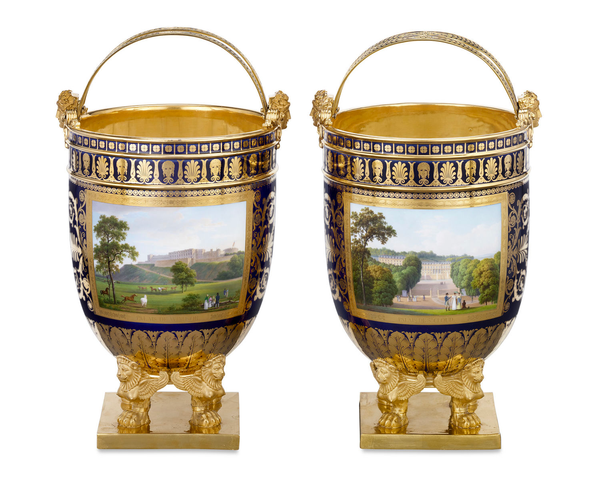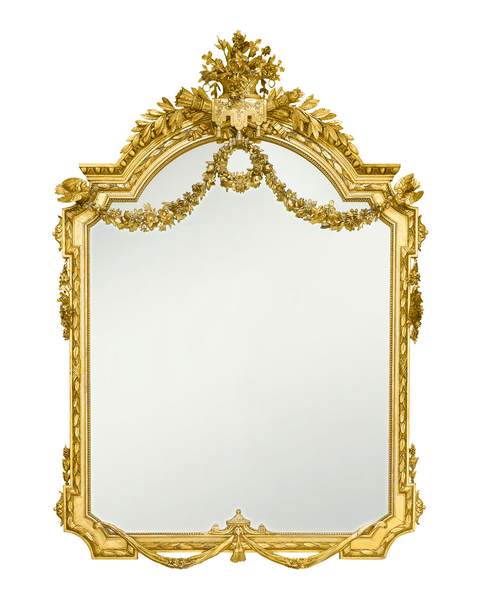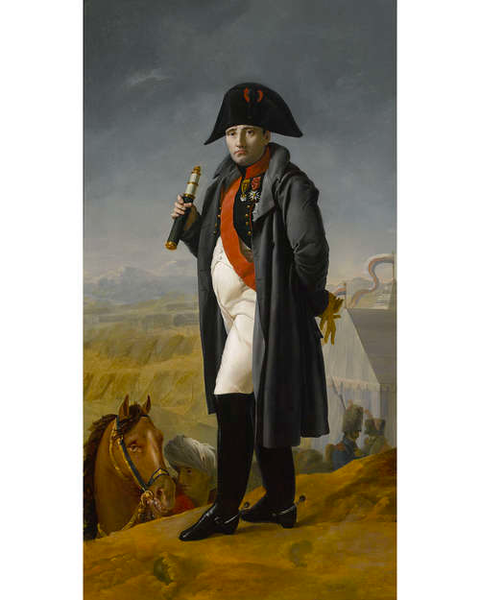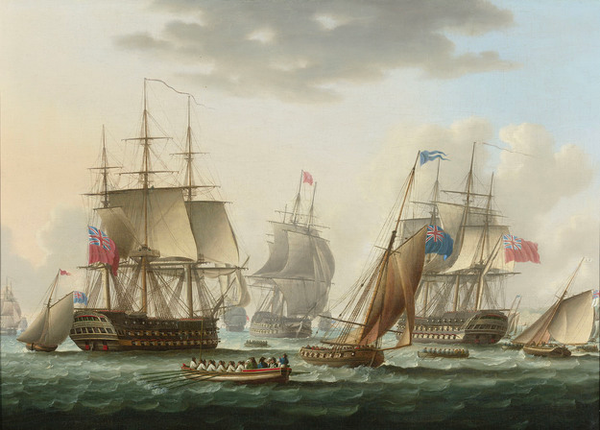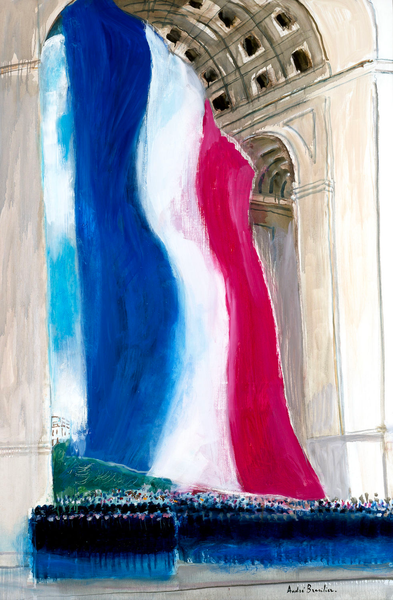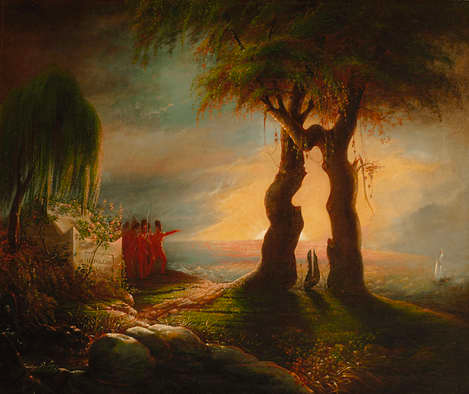How did this man, born to minor nobility, profoundly change Western and European history? Join us as we reflect on his life, his revolutionary ideals and his lasting impact on the world. Read on to learn more about one of history's greatest and most enigmatic leaders.
Introduction
 Bronze Bust of Napoleon by Renzo Colombo. M.S. Rau.
Bronze Bust of Napoleon by Renzo Colombo. M.S. Rau.
Napoleon Bonaparte remains an enduring figure in the annals of history. His military prowess, political acumen and cultural influence have left an enduring legacy that continues to captivate scholars, historians, movie-goers and art enthusiasts alike. M.S. Rau, specifically, has a unique tie to the legendary leader, starting with our city’s very foundation.
In 1803, the United States acquired approximately 827,000 square miles of land W of the Mississippi River for $15 million in a land deal with France known as the Louisiana Purchase. Not only did this legendary acquisition have a direct impact on the development and expansion of the United States, New Orleans, the most significant city in the territory, benefited immensely from this transaction. Though the city is presently part of the United States, the great French leader managed to leave his footprint just about everywhere you look in the city.
If Napoleon Bonaparte were to visit 21st-century Louisiana, he would likely find himself both gratified and astonished. Unlike the predominant legal systems in the other 49 states of the United States, which are rooted in common law, Louisiana's justice system is uniquely based on the Napoleonic Code once implemented by the emperor.
 Portrait of Napoleon as King of Italy (1805). Source.
Portrait of Napoleon as King of Italy (1805). Source.
Beyond the indelible mark he left on the legal system, Napoleon would undoubtedly find the cultural and artistic vibrancy of New Orleans captivating. The city continues to celebrate the diverse influences of the once-vast French empire, a multicultural tapestry that is tangibly evident at M.S. Rau. We take pride in offering an expertly curated collection of art, antiques and historical objects related to Napoleon, forging a tangible link to this complex and intriguing historical figure.We are delighted to use our expertise to share the
life, achievements and artistic influence of Napoleon Bonaparte.
Early Life and Ascent to Power
Corsican Roots
Napoleon Bonaparte was born on the culturally Italian island of Corsica in 1769, just one year after it was annexed by France. A poor but deeply proud people, Corsicans stubbornly resisted French rule for as long as they could. In French school, as an outsider, Napoleon grew sullen, studious and fiercely nationalistic for his homeland, Corsica.
Many would say that in his youth, Napoleon’s intellect and ambition were somewhat hidden by his quiet and awkward nature. Very few who knew the young Napoleon would have guessed that he would grow up to become a fiercely powerful general and unrelenting ruler. After his education in one of France’s best military academies, Napoleon’s military career began in Corsica, and he aligned himself with the Jacobins when he returned to France during the French Revolution. His true ascent to leadership commenced immediately after the execution of King Louis XVI. Returning to France from Corsica in 1793, Napoleon played a pivotal role in vanquishing the British forces at Toulon, reclaiming the territory for France and establishing his own celebrity.
Napoleonic Prisoner-of-War Guillotine. M.S. Rau.
In 1795, he helped suppress an insurrection against the revolutionary government, earning himself the esteemed rank of major general in the French military. Following relatively successful campaigns in Italy, Egypt, and Syria, Napoleon returned to France in 1799 as a hero. It was during this time that he masterminded his famed coup d'état, assembling a formidable alliance to overthrow the Directory—a five-man ruling body succeeding the revolution—and replace it with the French Consulate. Bestowed with the title of first consul, or Emperor of France, Napoleon assumed near-boundless authority, solidifying his grip on the reins of power while leaving an indelible mark on the annals of history.
Napoleon’s Monumental Influence
The Napoleonic Code
 Marble and Gilt Bust of Napoléon. M.S. Rau.
Marble and Gilt Bust of Napoléon. M.S. Rau.
Enacted on March 21, 1804, the code Napoleon put in place is still in place today (albeit with some revisions), and has served as inspiration for European governments and civil law codes around the world. The Code replaced the patchwork of pre-Revolution French laws and was a total reform of the French legal system.
This new civil code ensured a clear, consistent, widely promulgated set of laws that eliminated the confusion of feudal law, which was largely dependent on local customs and the whims of kings or other feudal lords. The Code recognized the principles of civil liberty, equality before the law (although not for women in the same sense as for men), and the secular character of the state. It reformed property laws, in particular inheritance laws that favored one child above another, and it standardized the court system. All judges were now appointed by the national governing body in Paris. The Code was adopted by many European countries during the Napoleonic Wars, and it eventually would be enacted in many countries over the decades as old governments fell.
Louisiana Law:
Louisiana was a French colony before it was ruled by the Spanish, and then reverted to French control briefly before the Louisiana Purchase by the United States in 1803. During its time under French rule, elements of French law were already ingrained in the legal fabric of the colony. After transitioning to American governance, Louisiana remains the only state in the U.S. to have a civil law system rather than a common law system, making it an exception to the rule of English common law that predominates in the United States.
Even today, the influence of the Napoleonic Code in Louisiana manifests in various ways. For instance, in areas such as property rights, contracts and successions, the Napoleonic Code is still used. It has contributed to the formulation of Louisiana's own Civil Code, which governs civil relations in the state. Notably, Louisiana's Civil Code is written in articles rather than statutes, mirroring the format of the Napoleonic Code. Aspiring lawyers in the state of Louisiana must study the Napoleonic Code, an area of study that only appears on the Louisiana bar.
Artistic Influence and Patronage
The Napoleonic Era in Fine Arts
Sèvres Manufactory
Napoleon Bonaparte Sèvres Ice Pails Delivered to Louis XVIII. M.S. Rau.
The relocation of a small porcelain workshop from Vincennes to Sèvres in 1756, under the patronage of King Louis XV and Madame de Pompadour, marked a transformative moment for French craftsmanship. Situated along the banks of the Seine, Sèvres became the epicenter for the production of some of the world's most esteemed porcelain, fulfilling the monarch's vision to rival and surpass the quality of Italian and German makers.
Napoleon’s reign, often defined by his military exploits, also marked a significant era in the patronage of the arts. One of the most emblematic expressions of this is his commissioned works from the Sèvres porcelain factory, a name synonymous with regal and artistic mastery. At the zenith of his power, Napoleon engaged the Sèvres factory to produce a porcelain service titled Vues Diverses. This artistic collection included scenes not just from France but from diverse global locales, serving as a testament to Napoleon’s quest for international respect and status.
Traditionally, the Sèvres factory had abstained from using silver in their works, maintaining their distinctive porcelain aesthetic. However, to meet the extraordinary expectations of Napoleon, the artisans deviated from their standard practice, incorporating silver embellishments to accentuate the designs. The first champaign cooler masterfully portrays the Palais de St. Cloud, Napoleon's permanent abode, and the Palais de Schönbrunn in Vienna, where he ratified the Treaty of Vienna in 1809. The locales represented on these coolers illustrate the different facets of Napoleon’s political life — one of domestic grandeur and another of international diplomacy. The second cooler features Windsor Castle and the Russian palace at Sarkocello. These structures symbolize Napoleon's aspiration for international acknowledgment and establish his place among the grand leaders of Europe.
Portraiture
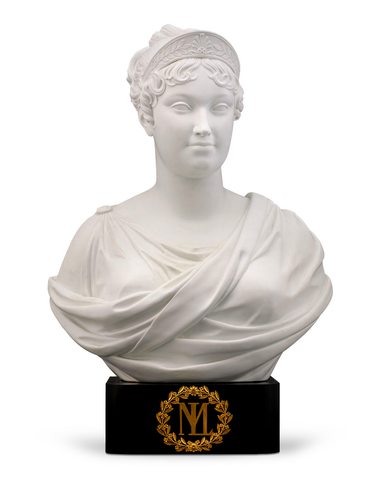 Sèvres Bust of Empress Marie Louise. M.S. Rau.
Sèvres Bust of Empress Marie Louise. M.S. Rau.
Napoleon, a master of visual propaganda, recognized the potency of imagery as a form of public persuasion. In a strategic move to secure popular endorsement for his second wife, he presented an official portrait of Empress Marie Louise at the 1810 Paris Salon. Created by the eminent François-Joseph Bosio, the painting superbly encapsulated the Empress's character, meeting with both public awe and critical acclaim.
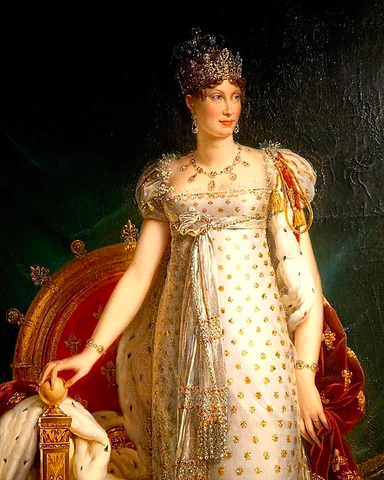 Empress Marie Louise of the French. Circa 1812. Source.
Empress Marie Louise of the French. Circa 1812. Source.
To immortalize this portrayal in three dimensions, the Sèvres factory employed the talents of their top modeler, Alexandre Brachard. Not only did this exquisite porcelain bust garner widespread approval, but it also earned Brachard a 'bonus for success,' as documented in the Archives de Sèvres. As an icon of both grace and power, Marie Louise is depicted wearing her neoclassical tiara and traditional drapery, presented on a wooden base adorned with her initials "ML" encircled by a gilt laurel wreath. Such is the piece's historical import that only two esteemed individuals could have commissioned it: Count Sanson, a diplomat preparing for service under the Russian Tsar, or Napoleon’s stepdaughter, Queen Hortense of Holland. The archives confirm that six smaller replicas were later created, of which only one survived, preserved by Marshall Blücher following the Prussian army's confiscation after the Battle of Waterloo in 1815.
Furniture
Napoleon III Giltwood Mirror. M.S. Rau.
Upon his ascension to Emperor in 1804, Napoleon Bonaparte inaugurated a distinct era in the decorative arts, known as the Empire style, which sought to underscore the legitimacy and enduring strength of his rule. Deriving its aesthetics from the classical civilizations of Greece and Rome, this iteration of neoclassicism was highly strategic and overtly propagandistic, certainly by design.
Bolstered by a resurgent economy, Napoleon’s Empire style marked a departure from the restrained forms of the preceding Directoire period, instead embracing grandiose architectural scales with an emphasis on superior craftsmanship and opulence. Bedroom and ladies' furniture often bore the swan and the lyre, evocative symbols of love and seduction. Dining furniture, on the other hand, showcased emblems of abundance, such as the cornucopia. Moreover, following Napoléon's Egyptian campaign, Egyptian motifs gained prominence. Caryatids, sphinxes and scarabs became ubiquitous, embellishing everything from furniture and porcelain to apparel and jewelry.
The Downfall and Exile
Napoléon before the Battle of Moscow by Joseph Franque. M.S. Rau.
As the first Emperor of France, Napoleon reorganized education, established the long-lasting Concordat with the Pope, and revolutionized military organization. Such a rise to power, however, could not come without some major costs. After numerous military defeats, Napoleon was exiled to the island of Elba in 1814. Shrewd and cunning as he always was, Napoleon found his way back. Escaping the island in 1815, Napoleon stumbled into Paris with open arms awaiting him, leading France back into battle and beginning his 100 days campaign. However, his last days were soon upon him.
Once again, Napoleon saw defeat at the Battle of Waterloo and was forced to abdicate in June 1815. He had led an army into Belgium in an attempt to defeat the Prussians, but was defeated by Prussian and British troops at the Battle of Waterloo. Waterloo was a humiliating loss for Napoleon, but in a last-ditch effort to preserve his legacy, he lobbied for his son Napoleon II, who was only four at the time, to be named Emperor, but this plea was rejected.
Napoleon Being Transferred for his Final Voyage, by
Thomas Buttersworth. M.S. Rau.
Napoleon was sent to the remote island of Saint Helena in the southern Atlantic this time, as the British government wanted to prevent another escape. He would die during his final exile in Saint Helena in 1821 of stomach cancer.
The Emperor's Heirs
Portrait of Napoléon II attributed to Johann Peter Krafft. M.S. Rau.
Napoleon Bonaparte unsuccessfully attempted to have his one and only child, Napoleon II, recognized as Emperor of France before his last exile. The child was seen by many as the last hope for France, but he and his mother, Marie Louis, fled to her homeland of Austria, and he never saw his father again. His mother would also eventually leaving, placing him in his grandfather’s guardianship. His grandfather gave him the new title of Duke of Reichstadt, dismissed all of his French attendants, and would not allow him to be called Napoleon. He instead went by Franz or Francis, all in an attempt to create distance between the child and his disgraced father.
Although this plan would not come to fruition, another would. Born in 1808, the nephew of Napoleon Bonaparte, Louis-Napoleon, later known as Napoleon III, had been determined from adolescence to regain the French throne and reestablish the Empire. He wrote and published his various military and political ideas, and word spread of his motivation and ideologies. Aligning himself with his uncle, Louis-Napoleon attempted a coup d’etat in 1836. Though unsuccessful, he was elected in 1850 as president of the Second Republic in France, continuing the Bonaparte family legacy. Much like his uncle, Louis-Napoleon also wanted to be Emperor, and he ultimately he reigned as Emperor Napoleon III from 1852-1870.
Louis-Napoleon’s rise to power strengthened the Bonaparte legacy. While his reign eventually came to a close after a disastrous defeat during the Franco-Prussian War, his rule has lived on as one of the most cunning and successful rises to power in history, much like his uncle.
L'Arc de triomphe by André Brasilier. M.S. Rau.
Conclusion
Napoleon's Tomb by Thomas Rossiter. M.S. Rau.
Today, Napoleon Bonaparte is a household name, a legend of European history and an enduring icon of French culture. He was one of the greatest conquerors of the modern world, expanding the French Empire and dominating European affairs in the years following the French Revolution. Undoubtedly, French history—and world history—would be written quite differently without his legacy. Napoleon has been used as the subject for many different aspects of French art and culture, with many
French painters and French storytellers using his rule and conquests as inspiration to tell fascinating stories, oftentimes with truth more unbelievable than fiction.
Sources: Roberts, A. (2016). Napoleon the Great. United Kingdom: Penguin Books Limited. International School History (8 February 2012), Napoleon's Rise to Power. Napoleon: Napoleon at War. www.pbs.org. "Napoleonic Code.“ Encyclopædia Britannica. Archived from the original on 29 December 2011.Battie, David, ed., Sotheby's Concise Encyclopedia of Porcelain, 1990, Conran Octopus.




